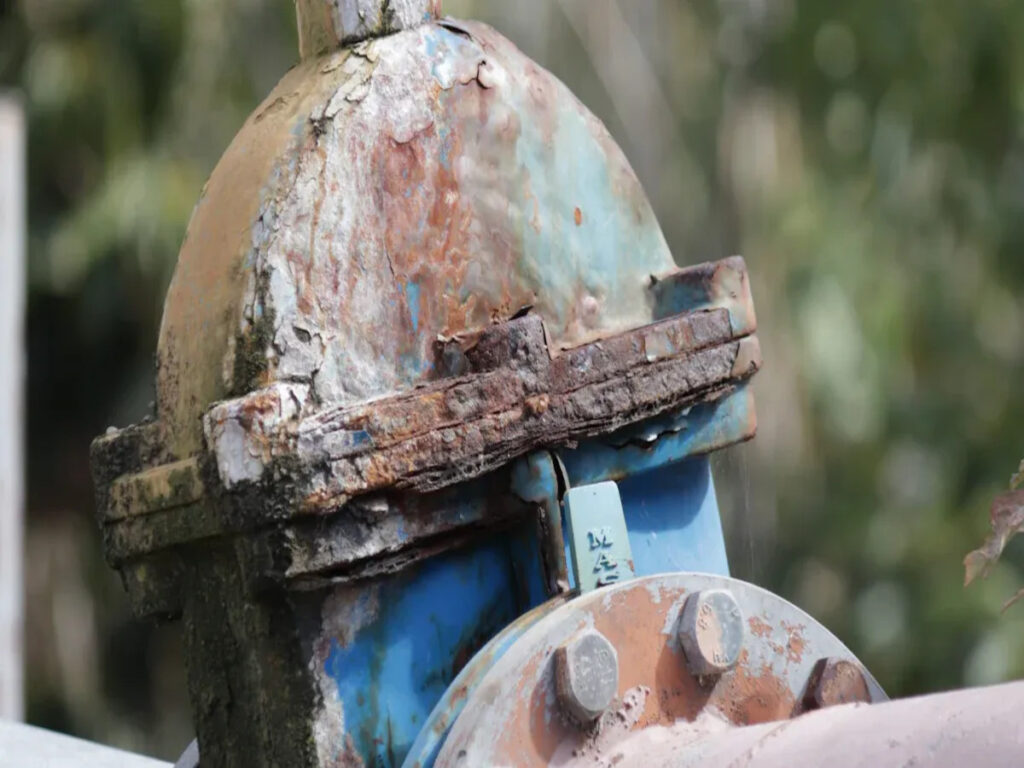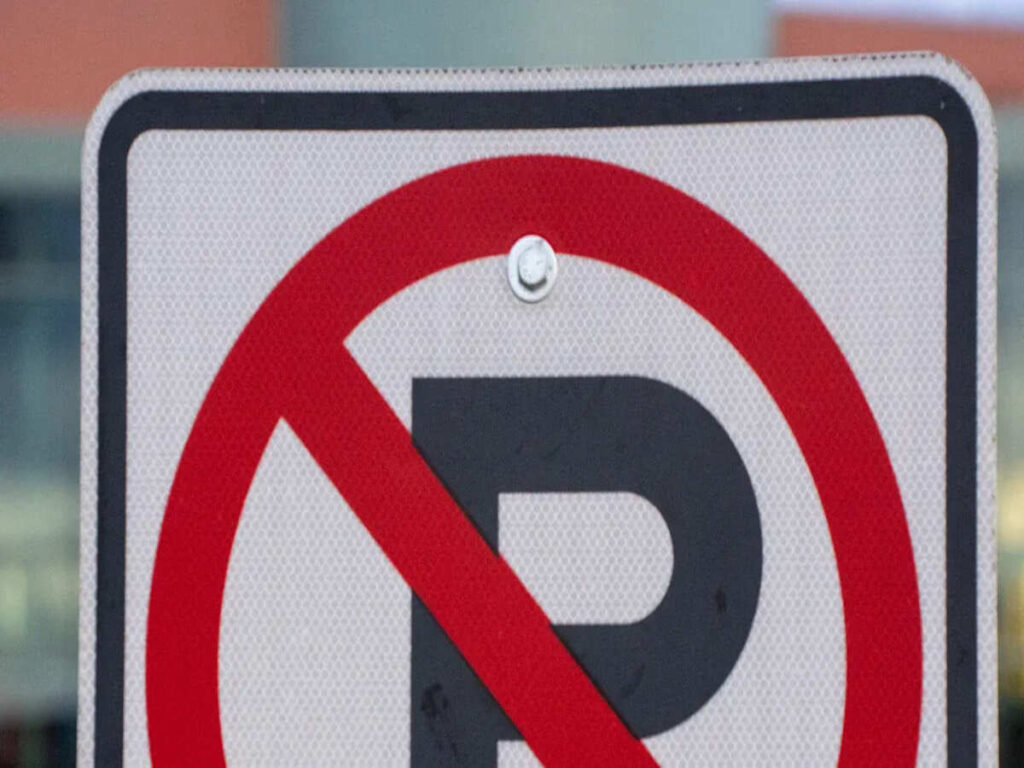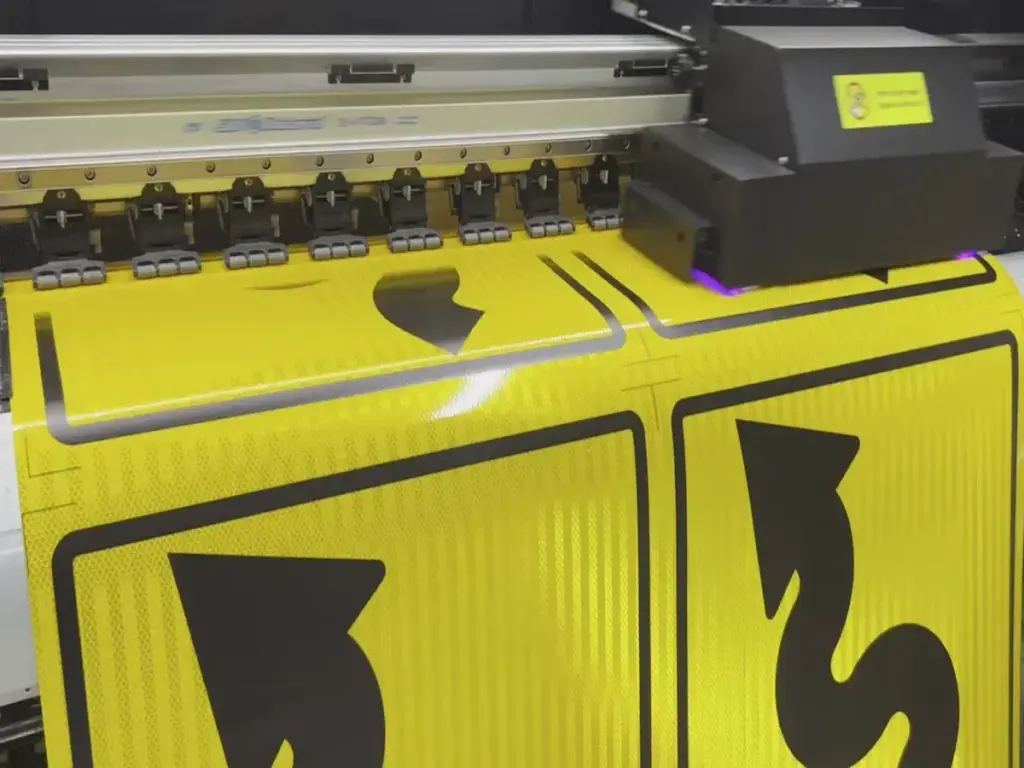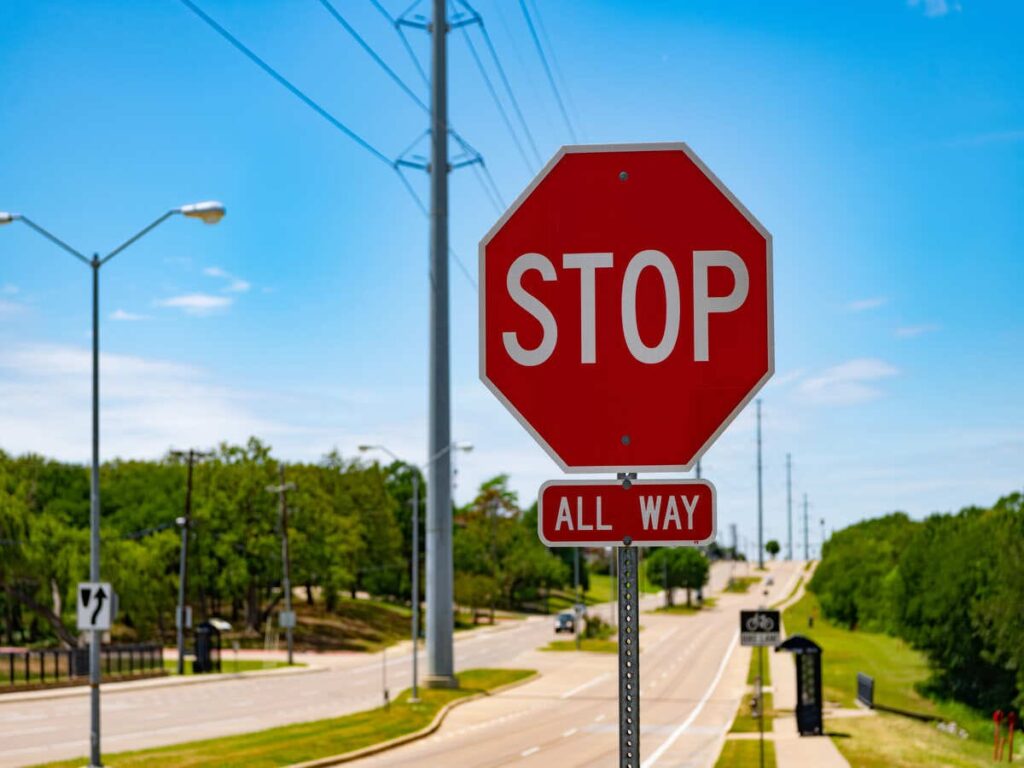
Les zones urbaines sont dures sur les bornes en métal. Pollution, intempéries, et l'utilisation lourde les porte. Pluie acide, Air salé près des côtes, et les vapeurs de voiture provoquent de la rouille. Le temps chaud peut affaiblir le métal, et des vents forts ou un sol lâche peuvent les rendre instables. Par exemple, La ville de New York utilise des bornes en acier inoxydable près de la côte pour gérer l'eau salée et les tempêtes. Miami lève ses bornes pour faire face à l'augmentation du niveau de la mer. Sans soin régulier, Ces problèmes peuvent provoquer des risques de sécurité et des correctifs coûteux. Prendre soin des bornes les fait durer plus longtemps et économiser de l'argent au fil du temps.
Pour vous aider à choisir le meilleur matériel de bollard de trafic pour différents défis environnementaux, Consultez le blog Comment choisir le meilleur matériel de bollard de trafic pour votre projet. Il fournit des conseils d'experts sur la sélection des matériaux qui peuvent résister aux conditions difficiles, Assurer à la fois la durabilité et la rentabilité pour votre projet.
Principaux à retenir
- Prendre soin des bornes en les nettoyant et en les vérifiant souvent peut les faire durer plus longtemps et économiser les coûts de réparation.
- La cueillette de matériaux solides comme l'acier inoxydable ou l'acier enduit aide les bornes.
- Ajout de couches de protection, comme le revêtement en poudre ou la peinture anti-graffitis, Rend les bornes plus fortes et sont plus belles dans les zones sales.
- Installation de Bollards dans le bon sens, comme garder l'eau à l'écart et éviter de toucher le béton, arrête la rouille et les maintient stables.
- L'achat de bornes solides protège les villes et aide la planète en réduisant les déchets.
La science derrière la corrosion dans les bornes en métal
Ce qui provoque la corrosion dans les environnements urbains
La corrosion se produit lorsque le métal se décompose de son environnement. Dans les villes, Cela se produit plus rapidement à cause de l'environnement. L'eau dans l'air se mélange à l'oxygène, Faire de la rouille sur du métal nu. L'air pollué avec du dioxyde de soufre et des oxydes d'azote devient acide et endommagent les métaux. Si vous habitez près de l'océan, L'air salé aggrave les choses. Le sel colle aux bornes en métal, tirer dans l'eau et causer des dommages rapides. Des rayures ou des bosses sur les bornes de borne permettent également aux choses nocives d'atteindre le métal en dessous.
Le rôle de la pollution urbaine dans l'accélération de la corrosion
La pollution dans les villes rend la corrosion plus rapide. Pluie acide, causé par l'air sale, atterrit sur les bornes et ruine leurs revêtements. La poussière et les particules des voitures et des usines collent aux surfaces, tenant l'eau. Cela facilite la croissance de la rouille. Dans les villes côtières, Le sel de la mer se mélange à la pollution, causer encore plus de dégâts. Sans bonne protection, Les bornes en métal dans ces endroits s'usent rapidement et ne durent pas longtemps.
Signes visuels de corrosion sur les bornes
Vous pouvez trouver de la corrosion tôt en vérifiant certains signes. Les taches de rouille sont les plus faciles à voir. Ils ressemblent à des marques brun rougeâtre à la surface. La peinture qui bulles ou peille montre que l'eau s'est mise en dessous. Des stries ou des taches sombres peuvent signifier que les produits chimiques dans l'air réagissent avec le métal. La vérification des bornes de trafic vous aide souvent à résoudre les problèmes tôt, Économiser de l'argent et du temps sur les réparations.
Facteurs clés qui affectent la durée des bornes
Comment la météo a un impact sur la corrosion
Le temps affecte considérablement la durée de la circulation de la circulation. Pluie, neige, et l'air humide rendent la rouille en métal plus rapidement. Près de la côte, L'air salé tire de l'eau sur le métal, provoquant plus de rouille. Un temps très chaud peut affaiblir les bornes avec le temps. Dans les zones orageuses, Les vents forts peuvent les endommager ou les desserrer. Pour protéger les bornes, Utilisez des matériaux et des revêtements qui correspondent à votre temps local.
Pollution urbaine: Pluie acide, Sel, et les fumées de voiture
La pollution dans les villes raccourcit la durée de vie des bornes en métal. Pluie acide, Fabriqué par l'air sale, endommage les couches de protection et expose le métal. Dans les villes côtières, sel se mélange à la pollution, Créer un environnement sévère. Les vapeurs de voiture et la poussière d'usine collent aux bornes de sécurité, Piéger l'eau et accélérer la rouille. Le nettoyage et le maintien des bornes peuvent souvent les aider à durer plus longtemps.
Différents matériaux et leur résistance à la rouille
Le type de matériau utilisé affecte la façon dont les bornes de sécurité résistent à la rouille. L'acier inoxydable dure longtemps car il a du chrome, qui bloque la rouille. L'acier galvanisé est moins cher et utilise une couche de zinc pour arrêter la rouille. Voici un tableau simple pour expliquer ce qui affecte la durabilité de Bollard:
| Facteur clé | Ce que cela signifie |
|---|---|
| Choix de conception | La forme et le style affectent le coût et la façon dont il fonctionne. |
| Durabilité des matériaux | Des matériaux forts comme l'acier inoxydable ou le béton durent plus longtemps. |
| Besoins de maintenance | Des revêtements spéciaux réduisent la fréquence à laquelle vous devez les réparer. |
| Facteurs environnementaux | La météo et la pollution peuvent épuiser des bornes en métal plus rapidement. |
Choisir le bon matériau et la bonne conception aide les bornes.
Choisir les bons matériaux pour la résistance à la corrosion
Bollards en acier galvanisé: Abordable et fort
Les bornes en acier galvanisées sont idéales pour les zones de ville animées. Une couche de zinc protège l'acier en rouillant d'abord. Cela protège l'acier des dégâts. Lorsque la pluie acide ou l'humidité touche la borne, Le zinc prend le coup. Cela le rend parfait pour les endroits avec beaucoup de trafic ou de pollution.
Ces bornes sont bonnes pour les grands projets car ils coûtent moins. Les villes peuvent protéger leurs rues sans dépenser trop d'argent. Ils peuvent ne pas avoir l'air aussi brillants que l'acier inoxydable, Mais ils durent longtemps. Ajout de revêtements supplémentaires, comme le revêtement en poudre, peut les rendre plus forts et mieux paraître.
Bollards en acier inoxydable: Élégant et durable
Bollards en acier inoxydable sont à la fois forts et beaux. Ils ont du chrome, ce qui crée une fine couche pour arrêter la rouille. Ce calque se fixe s'il est endommagé, Le rendre idéal pour les endroits qui ont besoin d'être beaux, comme les parcs ou les zones commerciales.
Ces bornes de sécurité fonctionnent bien dans des conditions difficiles, comme près de l'océan ou dans les villes polluées. Leur surface lisse empêche la saleté et la crasse, Alors ils sont faciles à nettoyer. Même s'ils coûtent plus cher au début, Ils durent plus longtemps et ont besoin de moins de fixation, Les faire valoir le prix des points importants.
Comparaison des matériaux pour différents besoins de la ville
Différents endroits ont besoin de matériaux différents pour les meilleurs résultats. L'acier galvanisé est le meilleur pour les usines ou les zones avec des pluies acides et une pollution. L'acier inoxydable est meilleur pour les villes côtières ou les zones piétonnes animées car elle résiste à la rouille et a l'air bien.
Autres matériaux, comme le béton et les composites, sont également utiles. Le béton est fort et bon pour contrôler le trafic. Les composites sont légers et résistent bien au temps. Chaque matériel a des avantages et des inconvénients, Mais l'acier est le choix le plus fort et le plus sûr.
| Collège urbain | Meilleur matériel | Avantages principaux |
|---|---|---|
| Zone industrielle | Acier galvanisé | Bon marché, résiste bien à la rouille |
| Ville côtière | Acier inoxydable | A l'air bien, gère l'air salé |
| Zone à trafic élevé | Acier inoxydable avec revêtements | Durable, facile à entretenir |
Choisir le bon matériau aide les bornes à rester fortes et à bien paraître pendant des années.
Revêtements protecteurs et traitements pour les bornes en métal
Galvanisation à chaud pour une forte protection
Galvanisation à chaud est un excellent moyen d'arrêter la rouille. Il couvre la borne avec une épaisse couche de zinc. Cette couche de zinc protège l'acier en dessous des dommages. Lorsque l'humidité ou la pollution frappe, Le zinc s'use d'abord.
Cette méthode fonctionne très bien dans les villes. Ça ralentit la rouille à 1/30 du taux normal. Les boulons galvanisés durent également plus longtemps que ceux non revêtus. Ils sont parfaits pour les endroits avec beaucoup d'humidité ou de pollution. Tandis que la durée de vie dépend de l'environnement, Les bornes galvanisées durent beaucoup plus longtemps que celles non traitées.
Revêtement en poudre pour la force et le style
Le revêtement en poudre rend le trafic Bollards plus fort et mieux. Une poudre sèche est appliquée, puis chauffé pour former une couche lisse. Cette couche protège contre la rouille, rayures, et s'estomper de la météo ou de la pollution.
Vous pouvez choisir des couleurs pour correspondre au design de votre ville. Les couleurs vives rendent les bornes faciles à voir, tandis que les tons neutres s'intègrent dans les parcs ou les places. Le revêtement ne coque pas ni ne pelage, Garder les bornes à la recherche neuve. Pour les zones occupées, Le revêtement en poudre est un choix dur et élégant.
Revêtements anti-graffitis et résistants aux UV pour les villes
Les villes exposent des bornes aux graffitis et à la lumière du soleil. Les revêtements anti-graffitis arrêtent la peinture et les marqueurs de coller. Vous pouvez nettoyer facilement les marques sans nuire à la borne.
Les revêtements résistants aux UV arrêtent de s'évanouir et de se fissurer de trop de soleil. Ce sont super pour les villes ensoleillées ou sèches. L'utilisation des deux revêtements maintient les bornes qui fonctionnent bien et fonctionnent bien, Même dans des conditions difficiles.
Stratégies de maintenance pour prolonger la durée de vie de Bollard
Nettoyage régulier pour éliminer la saleté et les polluants
Le nettoyage des bornes de route les aide souvent à durer plus longtemps. La saleté et la poussière collent à la surface et maintiennent l'humidité, qui provoque la rouille. Les laver supprime ces choses nocives avant de pouvoir endommager le métal.
Utilisez un chiffon doux ou une éponge avec un savon et de l'eau doux pour nettoyer. N'utilisez pas de nettoyeurs durs qui pourraient rayer la couche protectrice. Dans les zones polluées, Le lavage de pression peut éliminer la crasse dure. Le nettoyage une fois par mois garde les bornes en bonne forme et a l'air belle.
Conseil: Colondes de route propres après la pluie ou les tempêtes pour éliminer les pluies acides ou les résidus salés.
Inspection et réparation des dommages pour éviter la détérioration
Vérifier régulièrement les bornes de route vous aide à trouver des problèmes tôt. Chercher la rouille, peinture époustouflante, ou des fissures. Ceux-ci montrent que la couche protectrice est endommagée, Laisser la rouille commencer.
Correction des dégâts tout de suite. De petites taches de rouille peuvent être traitées avec des convertisseurs de rouille ou de la peinture fraîche. Pour des problèmes plus importants, remplacer les pièces endommagées ou ajouter de nouveaux revêtements. Les contrôles réguliers empêchent les petits problèmes de devenir des réparations coûteuses.
Note: Les bornes dans les zones animées ou près de la côte ont besoin d'une attention supplémentaire en raison de conditions plus sévères.
Soraires de maintenance proactifs pour une durabilité à long terme
Planifier à l'avance maintient les bornes fortes pendant des années. Faire un horaire de nettoyage, vérification, et recouvrir. Cela les protège des dommages et réduit les besoins de réparation.
Voici un plan de maintenance simple:
- Mensuel: Laver les bornes pour éliminer la saleté et la crasse.
- Trimestriel: Vérifier la rouille, peinture époustouflante, ou des fissures.
- Annuellement: Ajouter de nouveaux revêtements protecteurs comme la poudre ou les couches anti-graffitis.
Suivre ce plan permet d'économiser de l'argent et permet aux bornes de fonctionnement bien dans les villes.
Rappel: Changez votre horaire en fonction de la météo et de la pollution. Les zones côtières peuvent avoir besoin de soins plus fréquents en raison de l'air salé.
Les meilleures pratiques d'installation pour la résistance à la corrosion
Assurer un bon drainage pour éviter les pièges à l'humidité
Un bon drainage empêche l'eau de se rassembler bollards. Trop d'eau peut affaiblir la base et provoquer de la rouille. L'ajout de systèmes de drainage à la conception aide à s'écouler facilement. Les bases étanches bloquent également l'humidité et maintiennent la structure forte.
Dans les zones avec des inondations, bollards avec un travail de drainage intégré mieux sous une forte pluie. Ces conceptions gèrent bien l'exposition à l'eau et restent stables. Les revêtements anti-rust les font durer plus longtemps dans des endroits humides.
Conseil: Vérifiez souvent les systèmes de drainage, Surtout après les tempêtes ou les fortes pluies.
Éviter le contact direct avec le béton pour éviter la corrosion électrochimique
Toucher le béton directement peut provoquer une rouille électrochimique bollards. Cela se produit lorsque l'eau en béton réagit avec le métal, entraîner des dommages. Les scellants ou les barrières entre le métal et le béton arrêtent ce problème.
Des études montrent comment mesurer les risques de rouille dans les zones en béton. Par exemple, Norme ASTM C 876-09 utilise la tension pour prédire les chances de corrosion:
| Potentiel de demi-cellule (V) | Risque de corrosion |
|---|---|
| < -0.35 | 90% Chance de rouille |
| -0.35 à -0.2 | Aucun résultat clair |
| -0.2 à 0 | 90% pas de rouille |
Les changements de température et d'humidité peuvent également augmenter les risques de rouille. L'utilisation de systèmes d'isolation et de surveillance aide à protéger bollards dans des paramètres concrets.
Placement stratégique pour minimiser l'exposition aux conditions difficiles
Où vous mettez des bornes routières affecte la durée. Les éloigner de l'eau stagnante ou du spray salé réduit les risques de rouille. Dans les villes côtières, Raisser les bornes empêche légèrement de l'eau salée de se mettre en commun à la base.
Dans les zones urbaines polluées, Évitez de placer des bornes de sécurité routière près des évents d'échappement ou des usines. Ces spots les exposent à des produits chimiques nocifs qui accélèrent la rouille. Le choix des emplacements sûrs aide les bornes.
Rappel: Pensez à la météo et à l'environnement locaux lorsque vous placez bollards.
Avantages de faire durer plus longtemps des bornes
Économiser de l'argent en évitant les réparations et les remplacements
Les bornes fortes économisent de l'argent avec le temps. Les réparer ou les remplacer coûte souvent beaucoup, Surtout dans les villes animées. Des matériaux comme l'acier inoxydable ou l'acier galvanisé durent plus longtemps et résistent à la rouille. Revêtements spéciaux, comme des couches résistantes à la poudre ou aux UV, les protéger et réduire les coûts d'entretien.
Les bornes routières de bonne qualité empêchent également les dépenses supplémentaires des réparations fréquentes. La fixation des bornes endommagées peut bloquer les routes ou les trottoirs, provoquant des retards et des coûts de main-d'œuvre plus élevés. Choisir des bornes durables les maintient bien fonctionner et économiser de l'argent pendant des années.
Améliorer la sécurité et les looks dans les espaces de la ville
Les bornes difficiles assurent la sécurité des gens et rendent les villes plus belles. Ils empêchent les voitures d'entrer dans les zones où ils ne devraient pas aller, Protéger les personnes et les bâtiments. Les placer dans des endroits chargés aide à guider la circulation et à assurer la sécurité des piétons.
Les bornes de route modernes ajoutent également du style aux espaces extérieurs. Les nouveaux matériaux permettent des conceptions à la fois solides et attrayantes. Par exemple:
- Les bornes fixes aident à gérer la circulation et les zones de marche séparées.
- Finitions brillantes, comme l'acier poli, Match City Designs et est beau.
- Les bornes avec des lumières intégrées améliorent la sécurité la nuit et ont l'air décoratives.
Ces caractéristiques rendent les bornes importantes pour les espaces de ville sûrs et beaux.
Aider l'environnement avec des bornes durables
Les bornes de sécurité de la circulation durables sont meilleures pour la planète car elles créent moins de déchets. L'utilisation de métaux recyclés ou d'acier à faible teneur en carbone aide l'environnement tout en restant fort. Les revêtements résistants à la rouille font durer plus longtemps, donc ils n'ont pas besoin de remplacer aussi souvent.
Voici une table de choix écologiques:
| Type de matériau | Avantage environnemental |
|---|---|
| Plastiques et métaux recyclés | Coupe les déchets mais reste fort. |
| Bambou et bois composite | A l'air bien et est respectueux de l'environnement. |
| Production en acier à faible teneur en carbone | Abaisse la pollution tout en restant durable. |
| Revêtements résistants à la corrosion | Fait durer plus longtemps, Réduire les remplacements. |
| Revêtements de surface refroidis | Reflète la chaleur aux villes fraîches. |
| Bollards conformes au ciel sombre | Réduit la pollution lumineuse mais garde les zones en sécurité. |
Choisir fort, Green Bollards aide à réduire les déchets et soutient les villes écologiques.
Les zones de la ville rendent difficile pour les bornes en métal de durer. Pollution, météo, et l'utilisation quotidienne provoque une rouille plus rapide. Cela peut entraîner des problèmes de sécurité et des correctifs coûteux. Choisir des matériaux forts, en utilisant des revêtements protecteurs, Et planifier des soins réguliers peut aider les bornes de durée plus longtemps et économiser de l'argent avec le temps.
Prévenir les dommages devient plus important que jamais. Regardez ces données:
| Faits clés | Information |
|---|---|
| Taux de croissance du marché | S'attendre à grandir 5% annuel |
| 2025 Valeur marchande | Autour $150 million |
| 2026 Valeur marchande | Prévu pour atteindre $180 million |
| Raisons de croissance | Plus de villes, Besoins de sécurité, anciennes structures, Concentrez-vous sur l'entretien |
Agir désormais en sécurité les bornes, utile, et avoir l'air bien pendant de nombreuses années.
FAQ
Faire la rouille des bornes en acier inoxydable dans les environnements urbains?
L'acier inoxydable résiste à la rouille car il contient du chrome. Mais la saleté et le sel dans les zones polluées ou côtières peuvent nuire à sa couche de protection. Les nettoyer et les maintenir gardent souvent des bornes en acier inoxydable brillantes et sans rouille.
Les bornes en acier galvanisées peuvent-elles être repeintes?
Oui, Les borlles en acier galvanisé peuvent être repeintes. D'abord, Utilisez une amorce faite pour les surfaces galvanisées. Alors, Appliquer de la peinture pour le faire durer plus longtemps. Évitez les outils difficiles qui pourraient gratter le revêtement de zinc.
À quelle fréquence les bornes doivent-elles être nettoyées?
Nettoyer les bornes chaque mois pour éliminer la saleté et l'humidité. Dans les zones côtières ou d'usine, Nettoyez plus souvent pour arrêter le sel ou l'accumulation d'acide. Utilisez du savon et de l'eau pour un nettoyage régulier, et lavage de pression pour une crasse dure.
Quel est le meilleur matériel pour les bornes dans les villes côtières?
L'acier inoxydable fonctionne mieux dans les villes côtières. Sa couche de chrome arrête la rouille de l'air salé. Ajouter des UV revêtements anti-graffitis pour une protection supplémentaire. Ces matériaux gardent les bornes fortes et belles.
Les bornes peuvent-elles être respectueuses de l'environnement?
Oui, Bollards peut être respectueux de l'environnement. Utilisez des métaux recyclés ou de l'acier à faible teneur en carbone pour aider la planète. Les revêtements durables les font durer plus longtemps, Réduire les déchets. Certains bornes de circulation reflètent même la chaleur des villes fraîches et des températures plus basses.



















